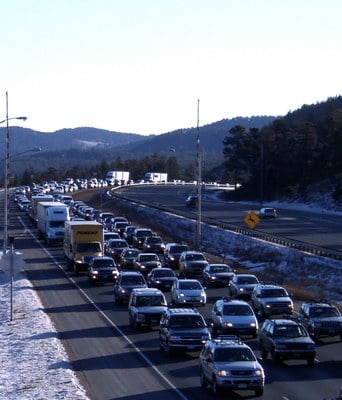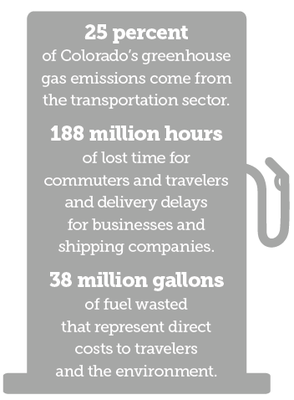Improving Our Interstates
Colorado’s interstates are the backbone of our transportation system. They are key to Colorado’s economy — connecting goods and people across our state and region.
However, as Colorado’s population and economy continue to grow, our interstates are feeling the pinch. I-25 and I-270 are crippled by congestion for long stretches of the day. Along I-70 West, worsening traffic — especially on the weekends — aligns with a host of concerns about extreme weather and accommodating passenger vehicles, freight, bicyclists and wildlife. I-70 East and I-76 — key freight routes for the state — are in need of major pavement improvements due to years of deferred maintenance.

The 10-Year Strategic Project Pipeline invests $1.2 billion (37.5 percent of all funding) into improving the condition and efficiency of these corridors. That means rebuilding pavement on I-70 East and I-76, delivering extra capacity and options on I-25 North, and tackling congestion bottlenecks across I-70 West.
![]()
Traffic congestion — just the extra travel time and wasted fuel in slow conditions — costs Colorado $3.6 billion each year.

Every year, the average commuter in Colorado:
- Spends 2 days sitting in traffic
- Loses $900 due to delays
- Burns an extra 19 gallons of gas

Years 1-4 Highlights
Nearly 40% of funds targeted toward corridor-wide modernization of I-25, which carries roughly 85 percent of the state’s population.
Other major capacity projects include a down payment towards fixing Floyd Hill, a well-known choke-point on I-70, a long overdue rebuild and widening of I-270, and a first phase of reconstruction along I-25 in Pueblo.
Years 5-10 Highlights
$1.2 billion (or 38%) of the total unfunded project list dedicated to the improvement of Colorado interstates.
Projects continue work on our most congested corridors while also reconstructing pavement along rural stretches of I-70, I-25 and I-76. Many sections of these interstates haven’t seen significant work since they were first opened to the public decades ago.
